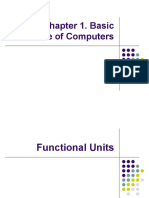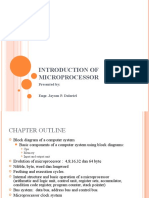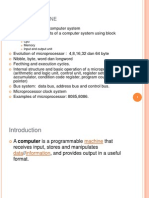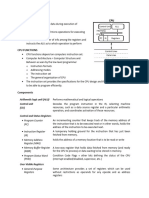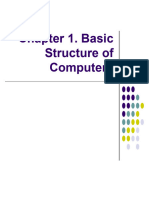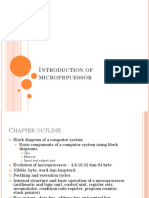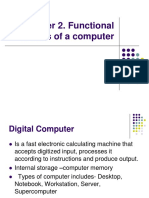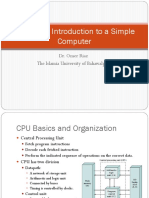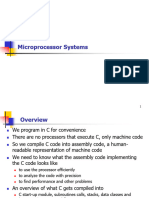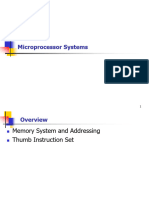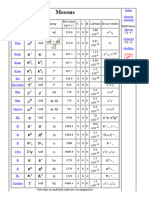0% found this document useful (0 votes)
17 views40 pages04 CPUOverview
The document discusses microprocessor systems and CPU architecture. It provides an overview of the CPU and its core components, including registers, the arithmetic logic unit (ALU), control unit, and system clock. It describes the function of these components and how they work together to process instructions. It also covers memory systems, instruction sets, and different architectural approaches for addressing memory speed limitations.
Uploaded by
Furkan TopaloğluCopyright
© © All Rights Reserved
We take content rights seriously. If you suspect this is your content, claim it here.
Available Formats
Download as PDF, TXT or read online on Scribd
0% found this document useful (0 votes)
17 views40 pages04 CPUOverview
The document discusses microprocessor systems and CPU architecture. It provides an overview of the CPU and its core components, including registers, the arithmetic logic unit (ALU), control unit, and system clock. It describes the function of these components and how they work together to process instructions. It also covers memory systems, instruction sets, and different architectural approaches for addressing memory speed limitations.
Uploaded by
Furkan TopaloğluCopyright
© © All Rights Reserved
We take content rights seriously. If you suspect this is your content, claim it here.
Available Formats
Download as PDF, TXT or read online on Scribd
/ 40









